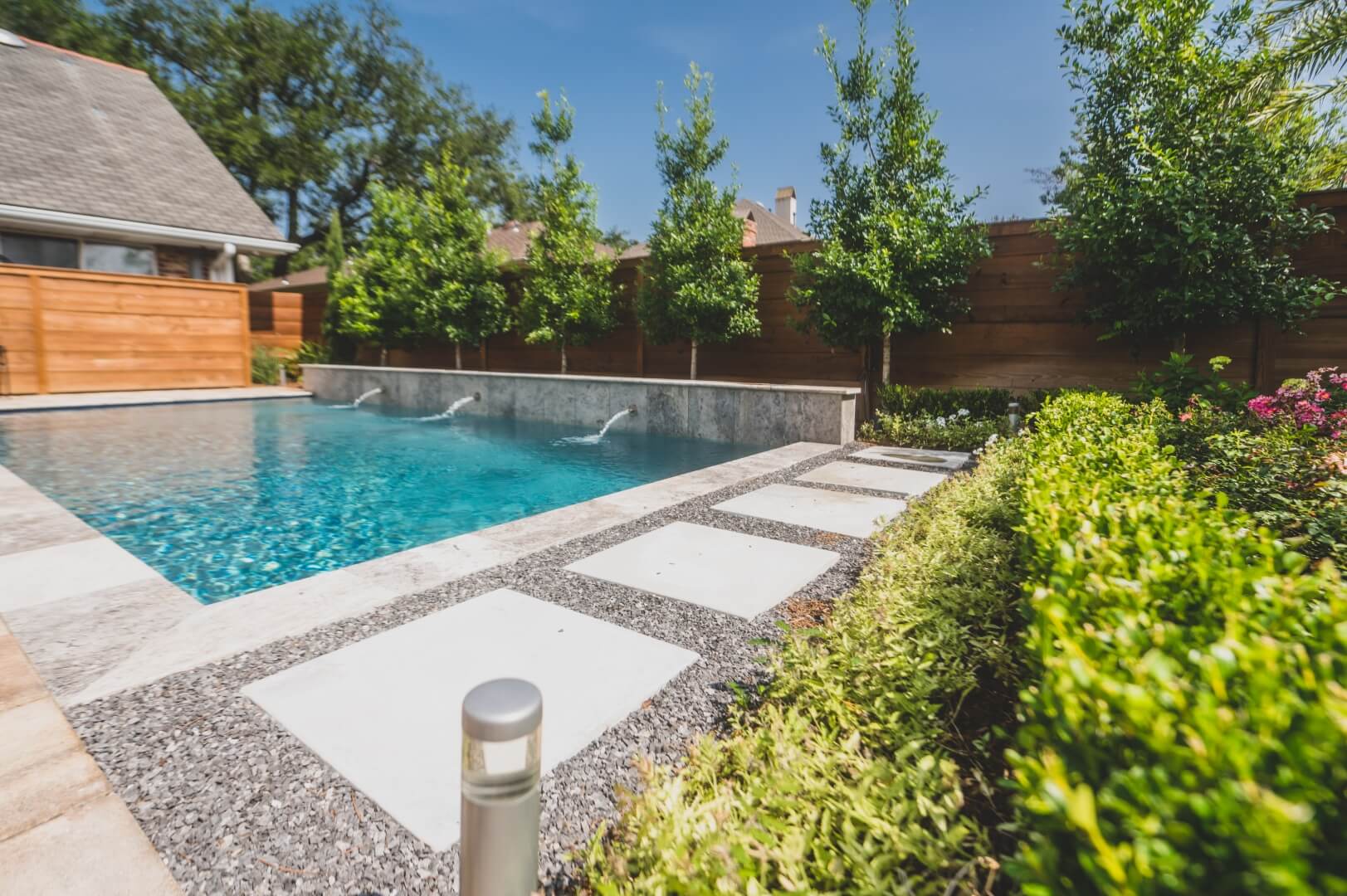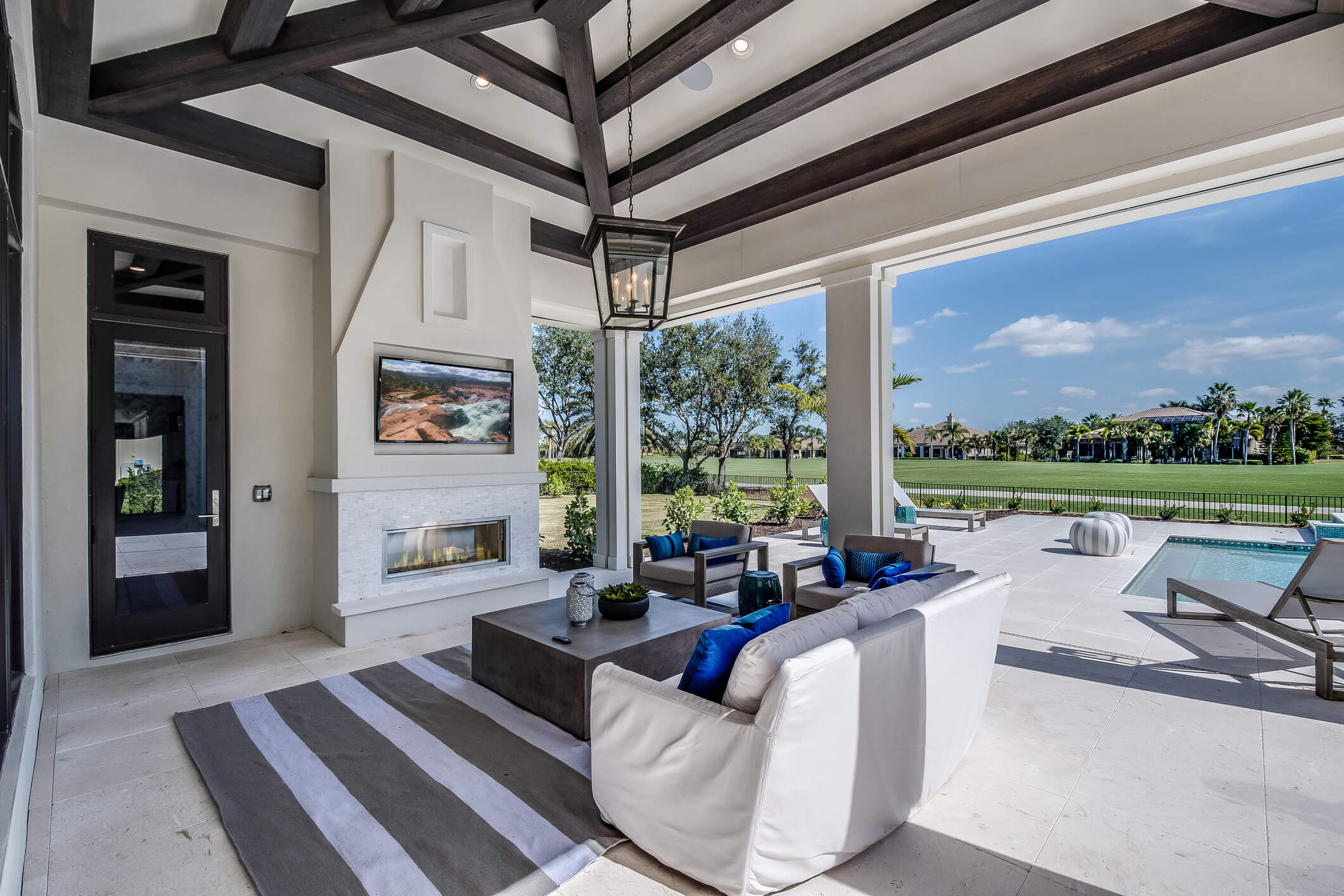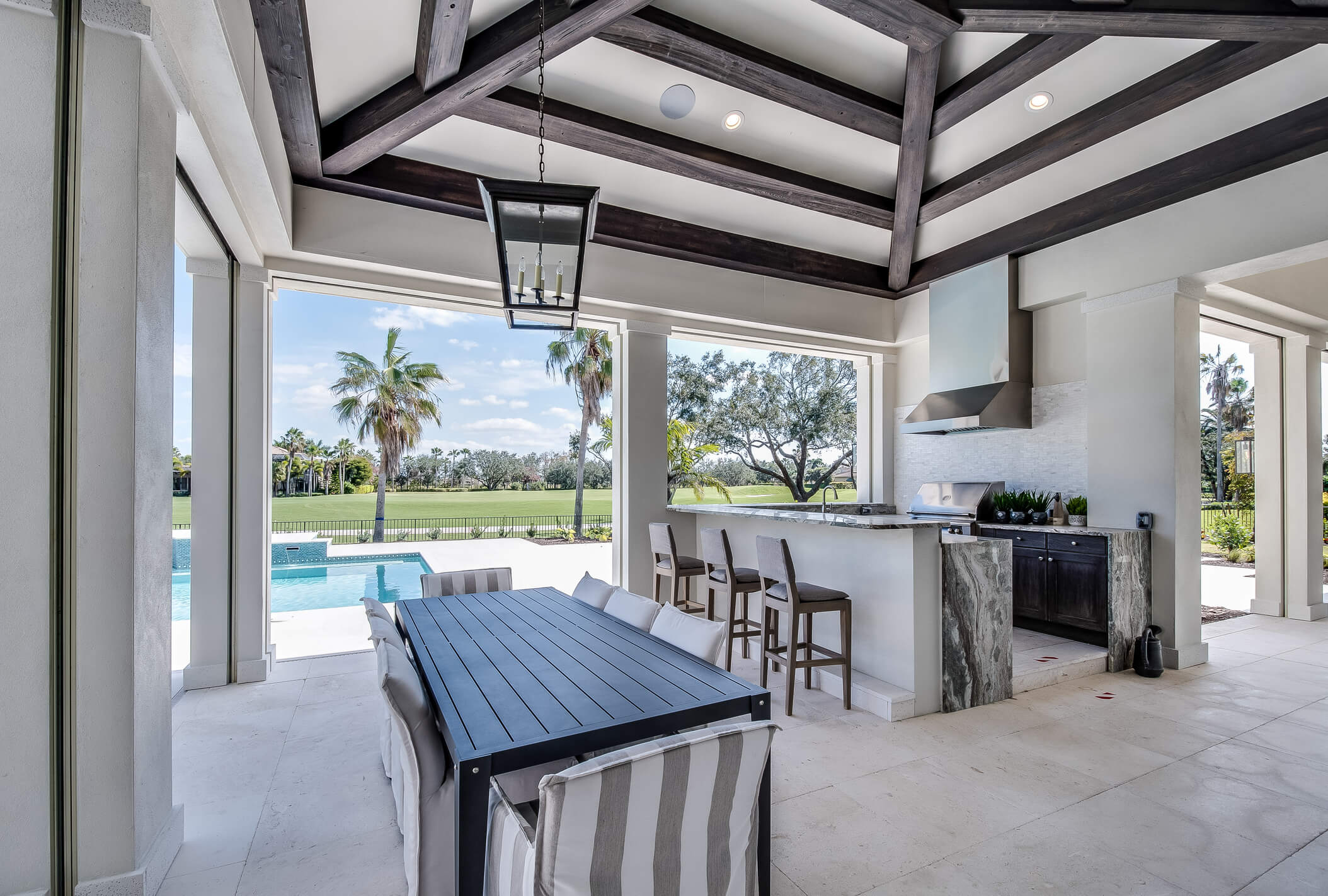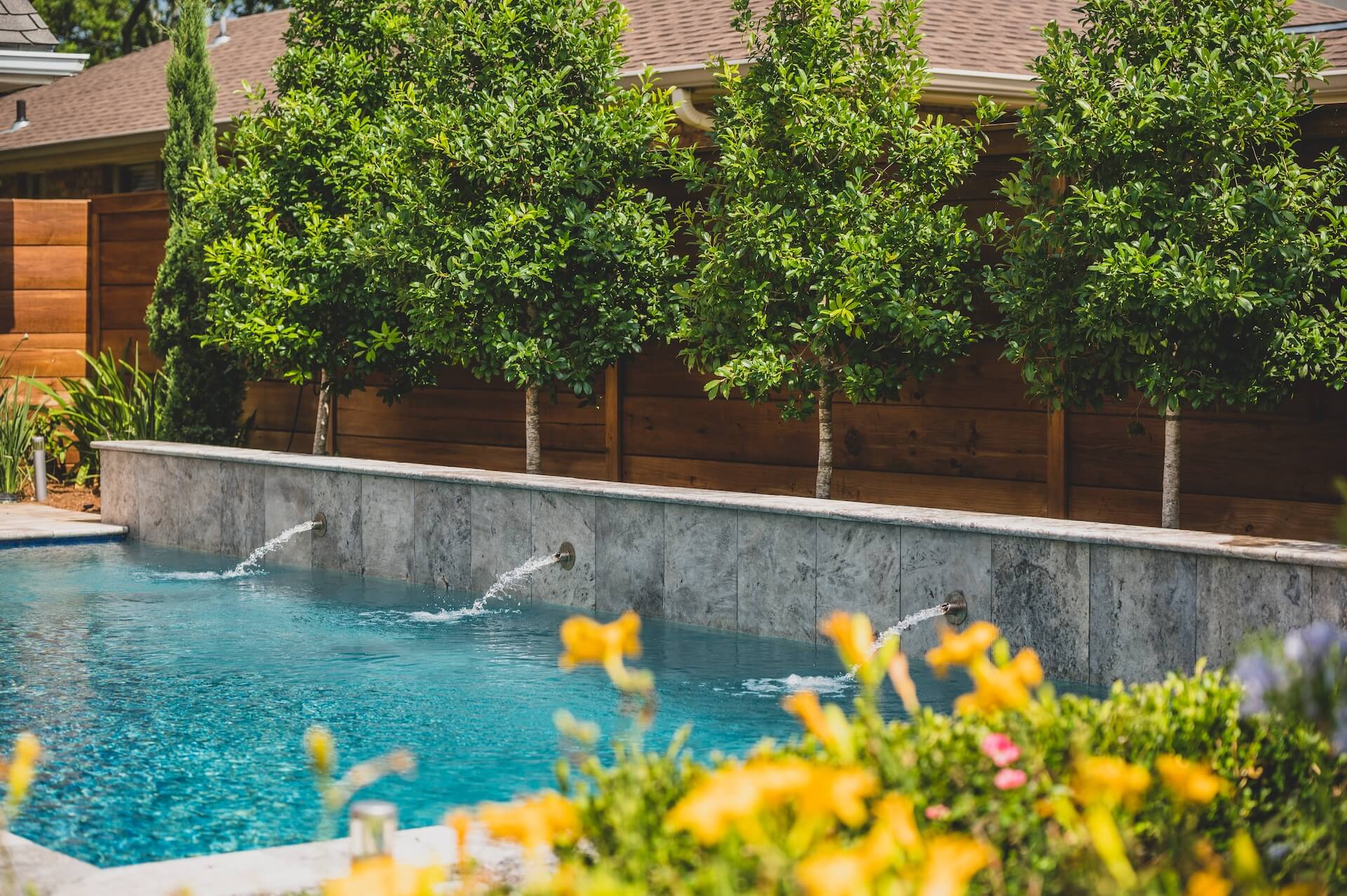Understanding Swimming Pool Maintenance Costs
If you’ve been dreaming about that perfect backyard swimming pool, you’re probably also wondering, “How much does it cost to maintain a swimming pool?” This is a smart question to ask before diving into pool ownership! At Miller Outdoors, we talk with homeowners every day who want to understand the real costs behind keeping that beautiful water sparkling clean and ready for swimming.
The truth is, owning a pool isn’t just about the upfront installation cost. It’s about the ongoing relationship you’ll have with your pool for years to come. Just like owning a car requires regular oil changes and tune-ups, your swimming pool needs consistent care to stay in top shape. But don’t worry! We’re going to break down all these costs so you can plan your budget and enjoy your pool without any surprise expenses.
Monthly Costs to Maintain Your Swimming Pool
When people ask us “how much does it cost to maintain a swimming pool,” we typically start by explaining the regular monthly expenses. These are the costs you’ll face throughout the swimming season (or year-round if you’re in our warm New Orleans climate).
Water Chemistry and Pool Chemicals
The biggest regular expense for pool owners is maintaining proper water chemistry. You’ll need:
- Chlorine or other sanitizers: This is your main defense against bacteria and algae. Depending on your pool size and type, you might spend $30-$100 monthly on chlorine. Tablets are usually more cost-effective than liquid chlorine, but they work a bit differently. We often recommend tablets for our customers because they provide steady, consistent sanitizing action that’s easier to maintain. They also don’t evaporate as quickly in our hot Louisiana sun, which means you’ll save money in the long run.
- pH adjusters: These chemicals (usually muriatic acid or sodium carbonate) keep your water balanced and comfortable for swimmers. Expect to spend about $15-30 monthly. Balancing your pH isn’t just about comfort—it also protects your pool equipment from damage. When pH levels get too high or too low, they can cause scaling or corrosion that shortens the life of pumps, heaters, and other expensive components.
- Algaecides and specialty chemicals: Depending on your pool’s needs, you might spend an additional $20-50 monthly on these specialty products. In Louisiana’s humid climate, algae can be a real problem, so many of our customers find that regular use of algaecides saves them from dealing with more expensive algae blooms down the road.
- Testing supplies: You’ll need test strips or a testing kit to monitor water quality, costing around $10-15 monthly. Regular testing is crucial—we recommend checking your pool water at least twice a week during heavy use periods.
The average pool owner spends about $80-$150 per month on chemicals, but this varies based on pool size, usage, and local climate. Here in New Orleans, our warm weather means pools need more chemical attention than in cooler regions.
Electricity Costs for Pool Equipment
Your pool pump, heater, and other equipment will increase your electric bill:
- Pool pump: Running your pump 8-12 hours daily can add $30-$100 to your monthly electricity bill, depending on your pump’s efficiency and local electricity rates. Variable-speed pumps cost more upfront but can save you significant money on electricity—sometimes cutting pump costs by 50% or more.
- Pool heater: If you heat your pool, this can be a major expense, adding $100-$500 monthly depending on your heating method and desired temperature. Gas heaters cost more to operate than heat pumps but heat the water faster. Solar heaters have minimal operating costs but are less effective during cloudy periods.
- Pool lights and accessories: These add minimal costs, usually under $20 monthly.
To keep these costs down, we often recommend energy-efficient equipment and smart controllers that optimize run times based on your pool’s specific needs.
Seasonal Pool Maintenance Expenses
Beyond the monthly costs, there are seasonal expenses to consider when calculating how much it costs to maintain a swimming pool.
Opening and Closing Costs
If you live in an area where pools are closed for winter:
- Pool opening: Professional service costs $250-$500 in spring, including removing the cover, reconnecting equipment, cleaning, and balancing water.
- Pool closing: Winterizing your pool costs $250-$500 in fall, including cleaning, balancing water, adding winterizing chemicals, lowering the water level, and installing the winter cover.
In New Orleans, many of our customers keep their pools open year-round, but they might still need a “mini-winterization” during the brief cold periods. This typically costs less than a full winterization service.
Seasonal Cleaning and Maintenance
- Spring cleaning: After winter, your pool might need extra care, costing $150-$300 if done professionally.
- Filter cleaning or replacement: Depending on filter type, this costs $20-$100 for cleaning or $100-$500 for replacement every 1-5 years. DE filters need more frequent attention than cartridge or sand filters, but they also provide the best filtration quality.
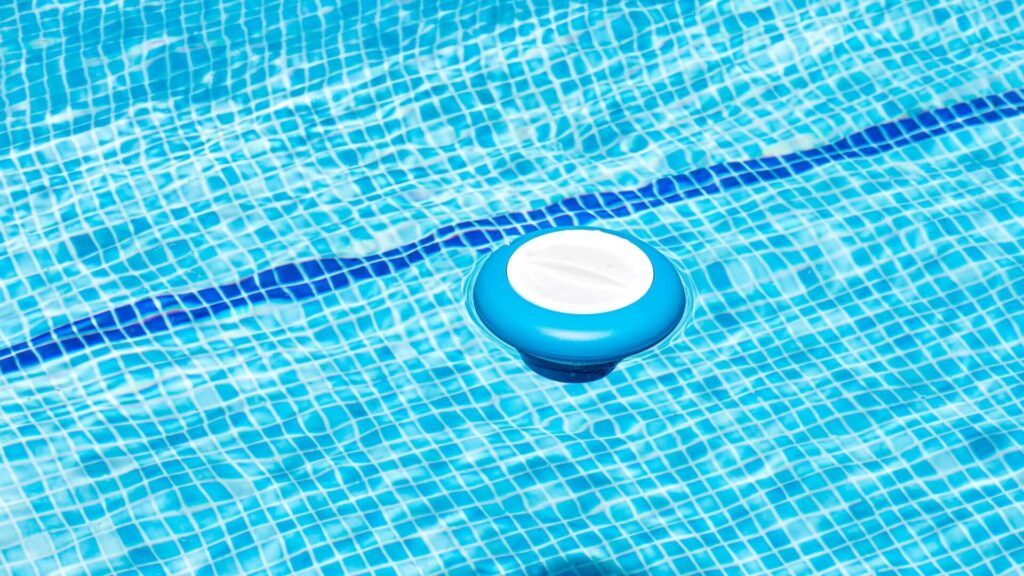
Occasional Pool Repair and Replacement Costs
When budgeting for how much does it cost to maintain a swimming pool, you’ll need to account for occasional repairs and equipment replacement:
Equipment Replacement
- Pool pump: Lasts 8-12 years, costs $300-$1,500 to replace. Variable-speed pumps cost more upfront but save on electricity and often last longer.
- Pool heater: Lasts 8-10 years, costs $1,500-$5,000 to replace depending on type and size. Regular maintenance can extend your heater’s life significantly—something we always emphasize to our customers.
- Filters: Components need replacement every 2-5 years, costing $20-$500 depending on filter type.
- Automatic pool cleaner: Lasts 3-5 years, costs $300-$1,200 to replace. Robotic cleaners are more expensive but often clean better and use less energy than pressure or suction cleaners.
Structural Repairs
- Liner replacement: Vinyl liners last 7-10 years and cost $3,000-$5,000 to replace.
- Resurfacing: Concrete or fiberglass pools need resurfacing every 10-15 years, costing $5,000-$30,000 depending on size and material. Our team at Miller Outdoors specializes in pool resurfacing and can help you choose the right materials for your budget and style preferences.
- Deck repair: Depending on material and extent of damage, repairs can cost $500-$5,000.
DIY vs. Professional Pool Maintenance: Cost Comparison
Many pool owners wonder if they should maintain their pool themselves or hire professionals. Here’s a cost comparison:
DIY Pool Maintenance
- Monthly chemical costs: $80-$150 (same as above)
- Equipment and tools: $200-$500 initial investment for skimmers, brushes, vacuum, etc.
- Time investment: 2-4 hours weekly (don’t forget to value your time!)
DIY maintenance can save money but requires consistent attention and learning proper pool care techniques. According to the Centers for Disease Control and Prevention, improper pool maintenance can lead to health risks from waterborne illnesses, so proper education is essential if you choose this route.
Professional Pool Service
- Basic service (weekly visit, chemical testing, skimming): $100-$200 monthly
- Comprehensive service (all maintenance tasks): $200-$400 monthly
- Chemical-only service (testing and adding chemicals): $80-$150 monthly
Professional service ensures proper maintenance and can catch small issues before they become expensive problems. At Miller Outdoors, our pool maintenance professionals are trained to spot early warning signs of equipment failure or water chemistry issues that might go unnoticed by most homeowners.
Factors That Affect Your Swimming Pool Maintenance Costs
When calculating how much does it cost to maintain a swimming pool, remember that several factors can significantly impact your expenses:
Pool Size and Type
- Larger pools require more chemicals, longer filtration times, and generally higher maintenance costs.
- Pool material affects maintenance needs:
- Vinyl liner pools have lower upfront costs but require liner replacement every 7-10 years.
- Concrete pools are durable but need more acid balancing and eventual resurfacing.
- Fiberglass pools typically have the lowest chemical and maintenance needs but higher initial installation costs.
Local Climate
- Hot climates like New Orleans mean more evaporation, which increases water and chemical usage. You’ll also need to run your filter system more often to prevent algae growth in warm water.
- Cold climates require winterization and spring opening services but might have lower chemical needs during shorter swim seasons.
- High rainfall areas can mean more frequent water balancing as rain can dilute pool chemicals and alter pH levels.
Usage Patterns
- Heavily used pools need more frequent cleaning and chemical treatment. If you host regular pool parties or have a large family, expect higher maintenance costs.
- Pools with lots of trees nearby require more skimming and cleaning due to falling leaves and debris.
Cost-Saving Tips for Pool Maintenance
At Miller Outdoors, we’re always looking for ways to help our customers save money while maintaining a beautiful, healthy pool. Here are our top tips:
- Invest in a quality pool cover: A good cover reduces evaporation, chemical loss, and debris in your pool. This investment can pay for itself within 1-2 seasons through reduced water, heating, and chemical costs.
- Upgrade to energy-efficient equipment: Variable-speed pumps and LED lights cost more upfront but significantly reduce electricity costs over time. Many of our customers see their pump-related electricity costs drop by half after upgrading.
- Stay on top of water chemistry: Regular testing and adjusting prevents more costly problems. Small chemical adjustments are always cheaper than dealing with an algae bloom or cloudy water situation.
- Consider a salt chlorine generator: These systems create chlorine from salt in the water, reducing the need to buy and add chlorine products. They typically pay for themselves within 2-3 years.
- Perform regular preventive maintenance: Cleaning skimmer and pump baskets, brushing walls, and backwashing filters regularly prevents bigger problems and extends equipment life.
FAQs About Swimming Pool Maintenance Costs
How much should I budget annually for pool maintenance?
For a typical residential pool, you should budget between $1,500 and $5,000 annually for all maintenance costs, including chemicals, electricity, occasional repairs, and professional services if used. This breaks down to roughly $125-$400 per month, with costs typically higher during swim season.
Is it cheaper to close my pool for winter or keep it running year-round?
In most climates, it’s cheaper to close the pool for winter, saving on chemicals and electricity. However, in milder climates like New Orleans, the closing/opening costs might exceed what you’d spend on minimal winter maintenance. Our team can help you calculate which option makes more sense for your specific situation.
What’s the most expensive part of pool maintenance?
For most pool owners, the biggest regular expense is electricity for running the pump and heater (if used). Over the long term, equipment replacement and structural repairs (like resurfacing) are the largest expenses, though these occur infrequently.
How can I reduce my pool maintenance costs?
Investing in energy-efficient equipment, using a pool cover, maintaining proper water chemistry, and performing regular preventive maintenance can significantly reduce costs. At Miller Outdoors, we can perform an efficiency audit of your pool system to identify specific areas where you could save money.
Conclusion: Is a Swimming Pool Worth the Maintenance Cost?
After exploring how much does it cost to maintain a swimming pool, you might be wondering if it’s worth it. While maintenance costs are significant, many of our customers find that the benefits—family recreation, exercise, entertainment, increased property value, and private relaxation—far outweigh the expenses.
The key is going in with open eyes about the real costs and having a plan for maintenance. Whether you choose DIY maintenance or professional service, understanding these costs helps you budget appropriately and avoid surprises.
At Miller Outdoors, we specialize in creating beautiful, efficient pools that are designed to minimize maintenance needs while maximizing enjoyment. Our outdoor living spaces are tailored to complement your pool and create a complete backyard paradise.
If you’re considering adding a pool to your property or looking to update your existing pool for better efficiency, we’re here to help. Our team can walk you through all the options and help you make choices that fit your lifestyle and budget.
Ready to learn more about pool ownership or need help with your existing pool? Call us at (504) 229-2333 or visit our Contact Page to schedule your discovery call. You can also check out our Landscape Design Cost Calculator to get an idea of overall project costs for your outdoor living space.
With the right partner, pool ownership can be less about maintenance headaches and more about making memories with family and friends in your own backyard oasis!

